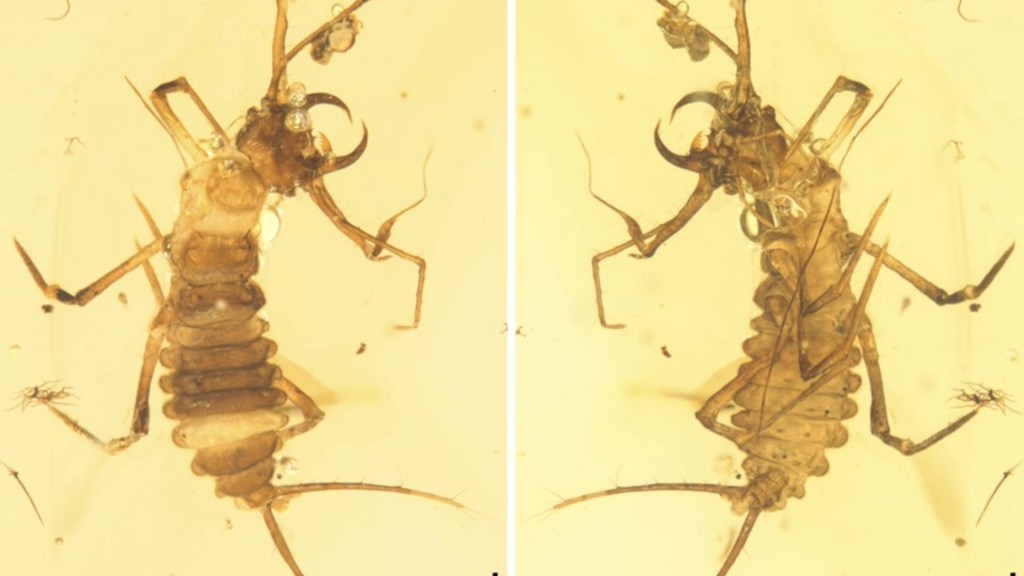Sixty-six million years ago, Earth faced a catastrophic event that dramatically altered the planet’s biodiversity. A colossal asteroid impact triggered a mass extinction that wiped out numerous species, including the formidable dinosaurs. Yet, amidst this upheaval, a resilient little survivor emerged: the black beetle, a member of the Loricera genus. Research indicates that these beetles have remained remarkably stable over the past 100 million years. Fossil evidence from the Cretaceous period shows astonishing similarities between ancient beetles and their modern-day relatives, particularly in their hunting methods, which have effectively remained unchanged. This intriguing persistence raises questions about the evolutionary dynamics at play and challenges traditional notions of change across vast geological timescales.
One of the key aspects of evolution, as articulated by Charles Darwin, is the process of natural selection. Darwin theorized that variations among individuals in a population play a critical role in survival and reproduction. Those individuals possessing traits that confer advantages in their environments are more likely to pass these traits on to future generations. This framework has guided our understanding of species evolution for over a century. However, the Loricera beetle poses a challenge to these ideas, suggesting that some species can endure through extensive periods with minimal change, coexisting with their ecological partners, like springtails. This phenomenon hints at a different evolutionary pathway, one marked by stability rather than constant adaptation.
Recent studies conducted by Chinese researchers analyzed Loricera specimens preserved in amber from the Cretaceous period, specifically from three amber fossils sourced from Myanmar’s Hukawng Valley. The researchers observed that both adult and larval forms of these beetles demonstrate remarkable adaptations for preying on springtails hiding among leaf litter. Their hunting strategy is particularly fascinating: Loricera beetles utilize elongated, robust setae (hairs) located at the base of their antennae to ensnare their agile prey. Upon detecting a springtail, the beetle can swiftly close its antennae to capture it within a structure formed by the setae, an impressive predatory tactic that has stood the test of time. The comparative analysis revealed both ancient and modern beetles share nearly identical anatomical features responsible for this hunting technique, underscoring the beetles’ successful adaptation to their ecological niche.
In light of 100 million years of potential evolutionary pressure, one might anticipate substantial changes in the morphology and behavior of the Loricera beetle. Surprisingly, this has not been the case. The findings reveal that despite the cataclysmic environmental changes caused by the mass extinction event and subsequent ecological upheaval, the beetles did not exhibit significant alterations in form, size, or dietary preferences. This phenomenon of evolutionary stasis—that is, long periods without substantial evolutionary change—is supported by the research, highlighting the stability of both springtails and their predators over the last several million years. Notably, this stability suggests that some low-trophic-level species possess a resilience that may protect them from extinction pressures more effectively than their more specialized predatory counterparts.
This extraordinary case raises important considerations regarding the resilience of certain species and their ability to thrive within stable ecological niches. In contrast to high-trophic-level species, such as herbivores and carnivores (including dinosaurs), which are often more sensitive to environmental shifts, the Loricera beetle showcases an efficient and reliable method of resource utilization. Their specialized diet of springtails, combined with their well-adapted predatory techniques, has likely diminished the constraints for evolutionary change. The study provides evidence that while many species adapt rapidly to shifting conditions, others may effectively occupy and maintain enduring ecological roles, allowing them to withstand tumultuous changes across eons.
Notably, the Loricera beetle is not the sole example of evolutionary stasis across Earth’s history. Other organisms, like crocodiles and garfish, are recognized as “living fossils,” exhibiting little to no significant evolutionary change despite existing alongside more dynamically evolving species. This indicates that evolutionary stasis may be more common than previously thought, emphasizing the complex interplay of environmental factors, niche occupation, and species survival in shaping evolutionary trajectories. The findings regarding Loricera beetles, published in the journals Palaeoentomology and Innovation, further contribute to our understanding of long-term evolutionary patterns, challenging scholars to reconsider how we interpret the resilience of certain species in the face of dramatic environmental changes and extinctions. The Loricera beetle’s story is a testament to the unpredictability and complexity of evolution, revealing that survival may not always require drastic adaptation but can also flourish under stability.

